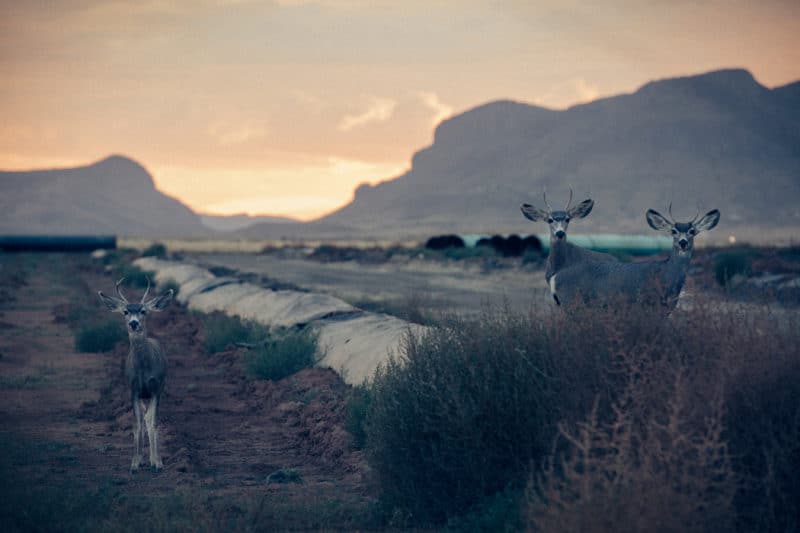The desert at dawn is green to silver, silver to gold. The desert at sunset is lavender and maroon and gold again. Songbirds, pronghorn, moths at night, southwest wind almost always.
Mountains cardiogram the desert: dusky purple, robin-egg blue, gunmetal black. To the northeast, a buildup of reef and limestone from 260 million years ago. Farther out, Paleozoic rocks slump toward a chaparral plateau. For almost a hundred million years the plateau was submerged: the desert here is the exposed bottom of a vanished sea, the Delaware. The igneous massif to the south that looks like the hatched egg of an enormous and menacing phoenix is a Paleogene baby, not even fifty million years old. The northern Chihuahuan Desert was drowned, kneaded, jabbed, blistered, ruptured, choked with ash for half a billion years of geologic tumult. Imagine the latent power of these violent tectonics.
The Chihuahuan Desert, the largest in North America, splotches northward to West Texas all the way from Zacatecas. For eight months I lived here, on a ranch outside the town of Alpine, Texas. Humans first came to the region at least thirteen thousand years ago. Who knows what drew them. Perhaps they had hunted themselves out of sustenance elsewhere and on this jagged and rocky plateau they saw food. Or maybe they were climate refugees, driven by the mass die-off of game that followed the last glaciation. David Keller, an archaeologist friend who studies this land, says they may have come here “for lithic resources”: that is to say, they liked the stones. One way or another, they stayed. The desert in West Texas is the easternmost home of Puebloan culture on the continent.
Desert, from the Latin desertum, means wasteland, a thing abandoned. A kind of nostalgia saturates the idea of it, turns all this imagined emptiness into a landscape of desire—from the Latin desidero: to feel the want of, to regret. This landscape mirages, shows you what you want to see: deliverance, supernatural feats, at least an epiphany. “All my life I have wanted to trick blood from a rock,” Barry Lopez writes in Desert Notes. “I have dreamed about raising the devil and cutting him in half. I have thought too about never being afraid of anything at all. This is where you come to do these things.” This is where desire brings you.
Because human desire is insatiable, the desert is actually not abandoned at all. After Saint Antony reclused in the Eastern Desert of Egypt in the third century, desert hermitage became such a fad in the Middle East that his biographer, the Bishop Athanasius, remarked: “The desert was made a city by monks.”
Herein lies the paradox: The desert is a deeply peopled landscape. Its concave stillness is a diversion, its emptiness a mirage. This is how, even before you arrive, it begins to meddle with your mind.
The desert has a long record of meddling with minds. Jesus and the Prophet Mohammed went to the desert and returned so transformed they have been changing us ever since.
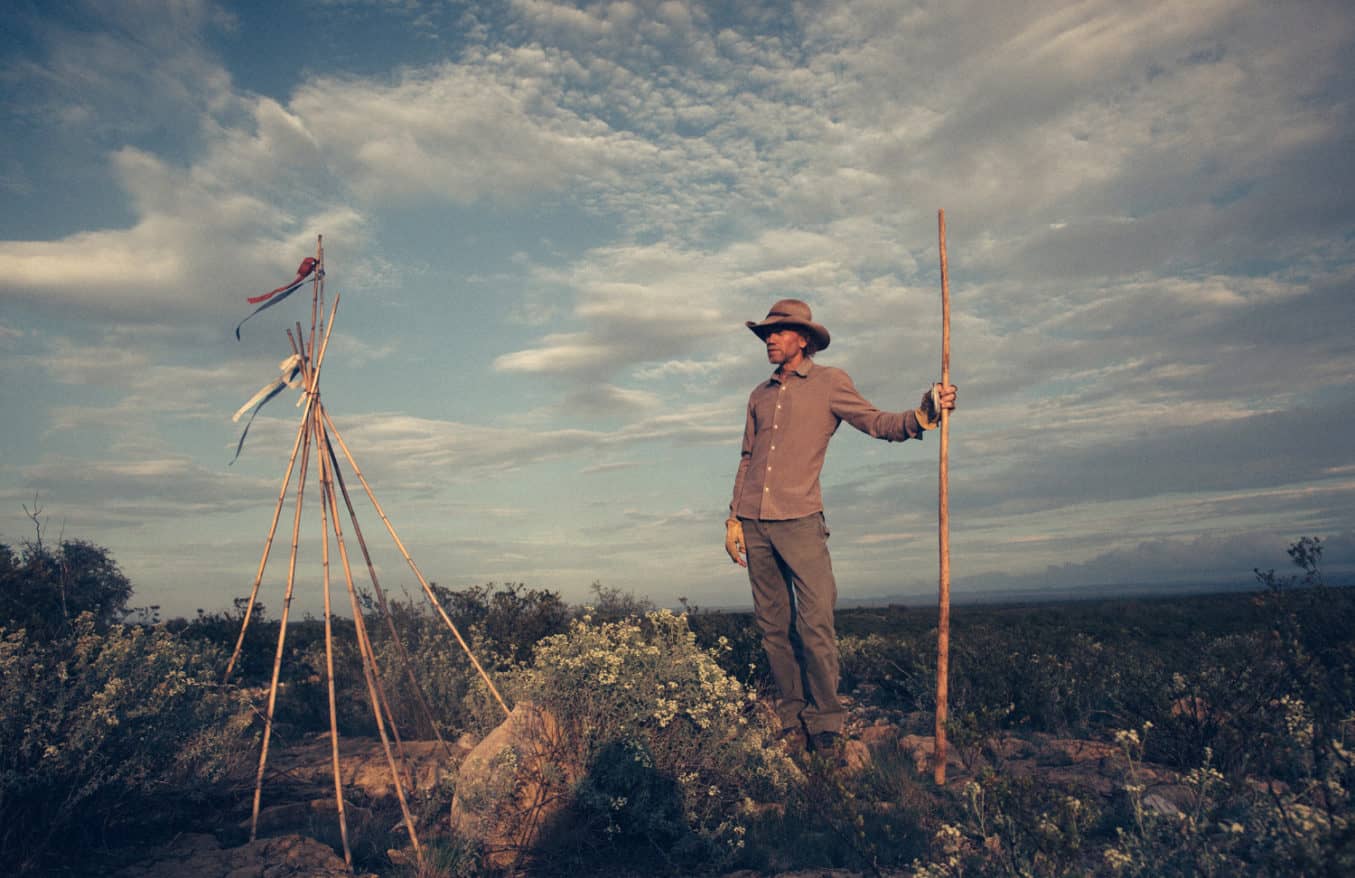
The Museum of the Big Bend, which documents the history of the northern Chihuahuan Desert, displays a 1550 map called Die Neüwen Inseln, the first known map to depict both North and South America, by the German cartographer Sebastian Münster. Münster’s rendition of the Western Hemisphere has little in common with the physical world. It shows India in China and places a nonexistent sea off the coast of what would become North Carolina, where explorers at the time envisioned a passage to the Pacific Ocean. So do we approach one another: seeing first only our own projections, filling in the blanks with imaginary stories, until we begin to learn more, map by map by map—but only if we choose to allocate our empathy and curiosity this way, if we choose to see.
When the Spanish conquistadors arrived in the sixteenth century, advancing from the south, they chose to see in this desert a route to strata of silver and mineral and pasture. The landscape of their imagining was devoid of people, and their maps called this gargantuan expanse of calderas and high plains and mesas and arroyos El Despoblado: the Unpeopled.
Such erasure will become a favorite colonial tactic essential to the existence of the United States throughout her history. In the homesteader mythology that continues to nourish the imagination of the country’s white hegemony, everything beyond the frontier of the Mississippi was the wilderness, the Wild West, to be conquered by means of redrawn maps and disease and rape and banishment and firearms. “Because white men can’t / police their imagination / black men are dying,” Claudia Rankine wrote after the murder of Michael Brown in Ferguson, Missouri, which lies six miles west of the river, past the threshold of the imagined wilderness.
This insidious obliteration pervades through the common use of the pronoun nobody, shorthand for nobody I care about: all the people genocided, culturally or physically, into insignificance and collective colonial forgetting. “There’s just absolutely nobody here!” is the refrain I hear from birdwatchers, hikers, people who come to the desert to exhale a year of office work and inhale the creosote scent of desert rain. One word to dismiss my friends and neighbors whose ancestors came here before mammoths went extinct and who still live here, in virtual segregation, often in deep poverty and neglect.
In the great colonial tradition, they reshape the desert to fit their desire: they make the desert empty again.
Diary, November 11:
My friend Enrique Madrid, a Jumano Apache, tells me his dream: “I am invited to be a guest on an NPR show but there is no room for me to sit in the studio. Wherever I try to have a seat they say it is occupied, try looking over there. I have no place in this country. There is no room for me here.”
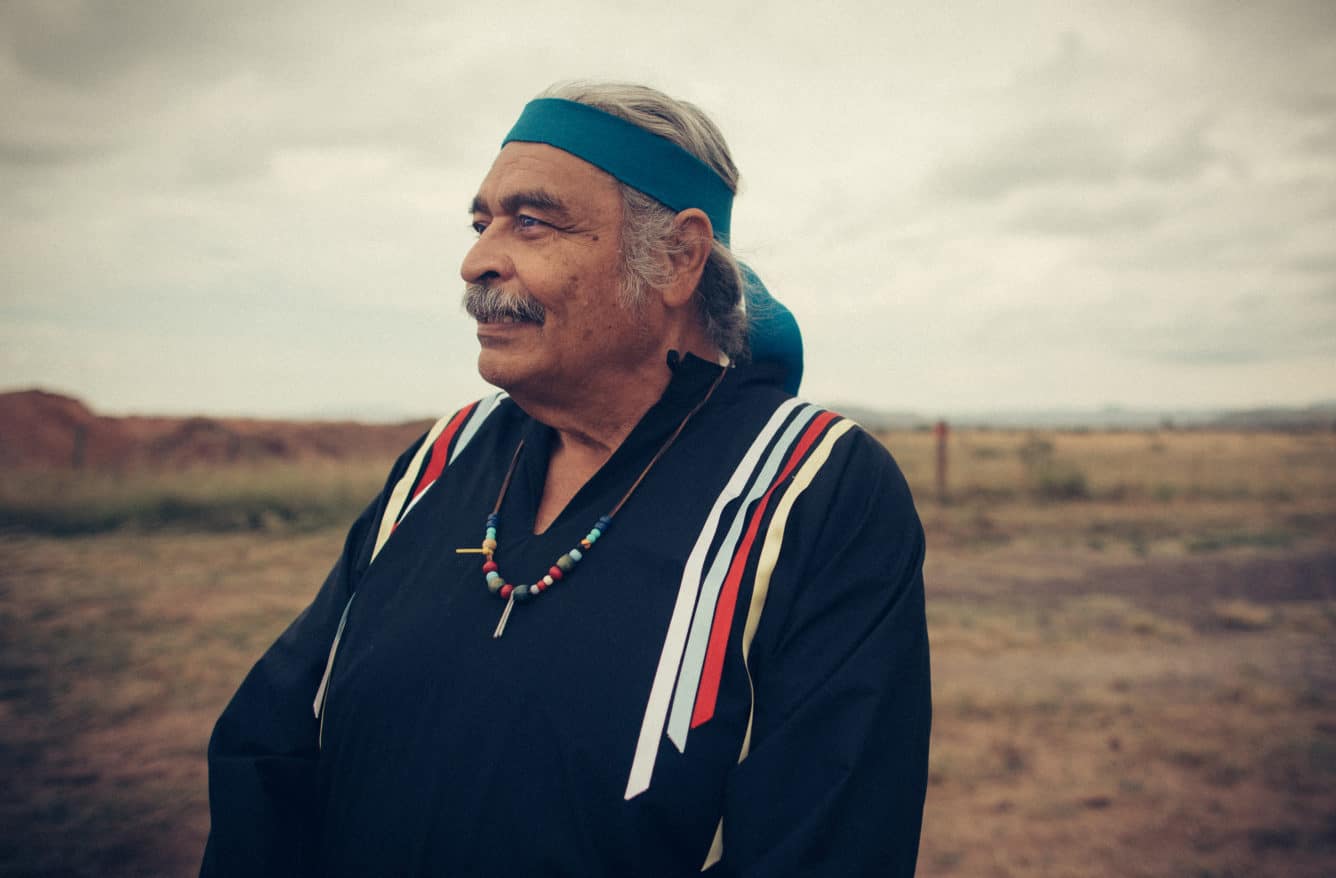
The people who come to this desert from the south today are following illusory maps to perceived prosperity and safety, braille the desert floor with their desperate tracks, leave behind stained tick mattresses and empty 7UP bottles in mesquite thickets, leave behind their own bodies. Scores of migrants die trying to cross the desert each year, mostly from exposure. The desert is a chimera that feeds on the hopes and bones of its trespassers.
I, too, came to the desert to try my luck. I moved to a single-room casita on a friend’s ranch to write a book, thinking I could translate desert vastness into space on the page that would allow, as Simone Weil puts it, for grace to enter. I expected an internal unfurling, a blossoming of the heart and, importantly, of thought. Like the Desert Fathers, I came for Hesychasm, the mystical interior silence.
On some days it doesn’t seem like such a tall order.
Diary, June 5:
I spend the day trying to remember the words “ratchet strap.”
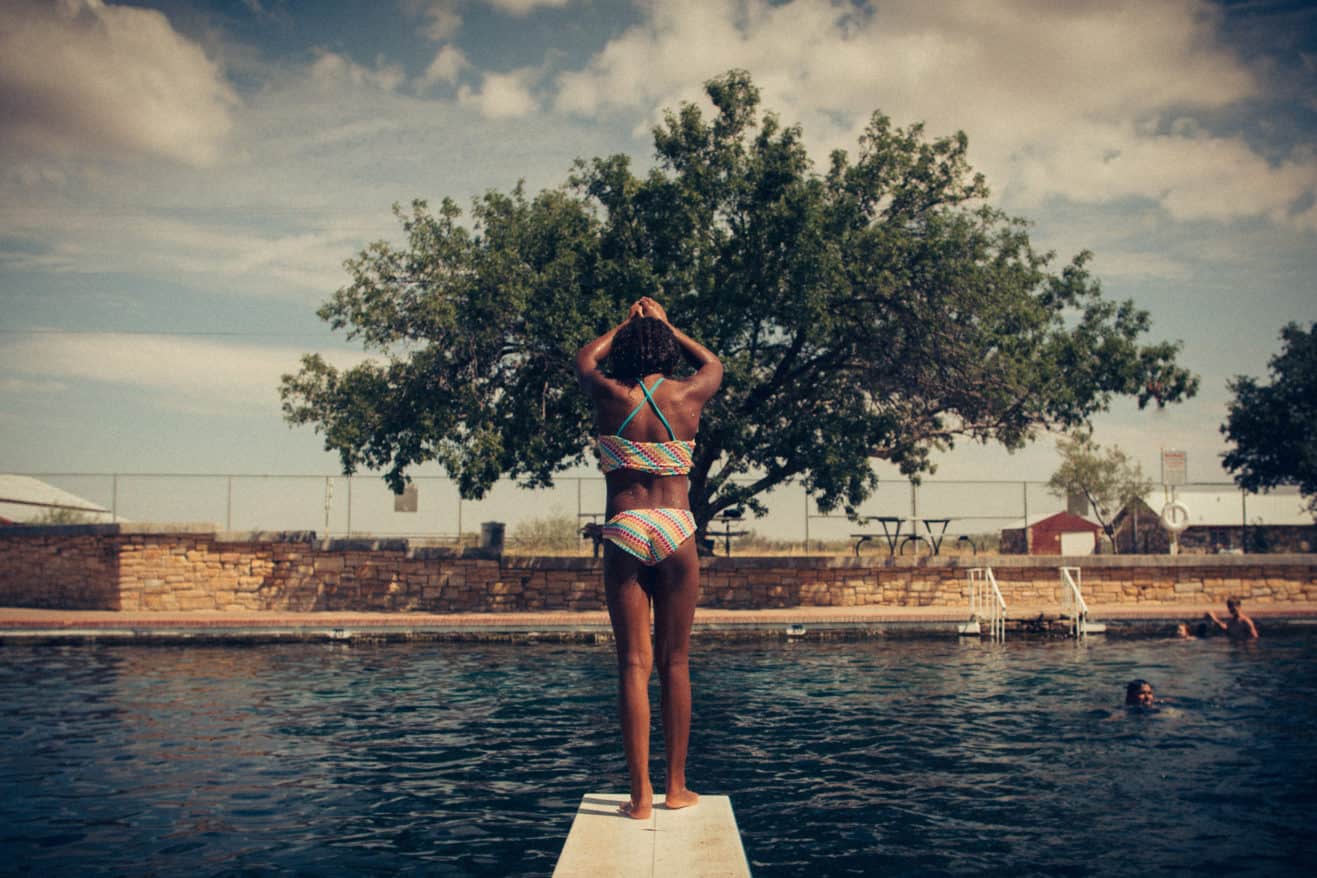
Sixteenth-century colonists ravaged the desert for gold doubloons; modern-day treasure hunters throttle it for oil. An oil corporation is drilling the desert north of the ranch, next to the world’s largest freshwater swimming pool at Balmorhea, hoping to suck out billions of barrels of oil and gas. The corporation is called Apache, like one of the nations that has lived in this desert for centuries. Apache Corporation was founded by three white men in Minnesota and has no historic ties to any indigenous people other than appropriation and tangent: it picked a name of an Indian tribe whose history of anticolonial resistance to this day titillates white prejudice, and it drilled its first wells in Cushing, Oklahoma, on land homesteaders had stolen from the Sac and Fox Nation during the Oklahoma Land Run of 1889. This was the second time Sac and Fox had their land stolen by whites. In the eighteenth and early nineteenth centuries, French colonial government and the United States deported them from their original home territory, in the Great Lakes region. They also stole their real names, Sauk and Meskwaki. Name theft is trendy, a timeless fashion. The United States later would steal the name of the Sauk resistance hero Black Hawk to dub an attack helicopter. I have flown on Black Hawks over a different desert, in Iraq. Another helicopter gunship the US Army uses there is called Apache.
Oil fields in that desert, too.
My neighbors in the northern Chihuahuan Desert worry about what Apache Corporation’s drilling will do to the desert’s most precious natural resource, water. Water here comes from a minor aquifer trapped in basalt rock hollow: a 35-million-year-old stilled lava capsule. Average annual rainfall here is less than a third of that of New York, and the aquifer recharges slowly. It is the sole source of water for three sizeable West Texas towns set on a nearly equilateral triangle about twenty-five miles apart. I cook and bathe with water from this underground freshwater sea after my landlady’s windmill lift pump brings it up from a well two hundred and fifty feet deep. The aquifer’s depth varies through the region. Some have to drill six hundred feet underground before they hit the bolson.
On windy days the ungreased pump on the ranch turns and rustily bellows. My landlady has christened it the Elephant.
I can see the Elephant from the kitchen window of my casita when I prepare meals on a three-burner gas stove pilfered from a 1950s trailer. The gas line for the stove runs through a hole in the wall to a propane can that stands on an antique wooden chair outside the kitchen window. I convince myself that this setup is perfectly safe.
A few miles away, the oil and gas company Energy Transfer Partners is building a 143-mile long pipeline to transport natural gas from Texas to Mexico, laying in a shallow ditch high-density polyethylene pipe painted forest green to blend into some very different landscape. This setup, the company assures us, is perfectly safe, too.
I think of the two gas pipes, theirs and mine. The desert shrinks and expands space, replicates its own mirages in micro and macro.
One evening, Keller, my archaeologist friend, invites me to visit an anthropological site that he says has been episodically inhabited for ten thousand years. The light is beautiful and there are deer and jackrabbits, and coyotes sing under a sunset rainbow. Keller points out mortars, teepee circles, ashes of ancient fires, arrowheads, explains how he can age them on sight. The site is on private land, ranch land; it has been hardly studied. We are the last people on Earth to see any of this. The next morning the oil company’s mulchers and bulldozers plow through the site. A history of a civilization billows palely over the trench, then settles. The pulverized viscera of the desert.
Weeks later another Jumano friend takes me to the Río Grande, where it skirts the ranch he is housesitting for an old Indian rancher. We listen to shallow water chirp over rocks.
“My ancestors have been crossing this river back and forth for twelve thousand years,” my friend says. Then he says, “Look.”
A round flat rock with a hole through the center.
“It’s a sinker. For fishing. For when my ancestors fished in the river.”
I pick it up, hold the weight of it in my hand: hundreds of years, a history. I snap a cellphone photo. I place the rock back on the ground, trying to find the exact spot.
“You should keep it,” he says.
“No, I can’t. It’s not mine to keep.”
“Nonsense. You have the mentality of a gringa. Here. I’ll take it. It’s my people’s history. I’m keeping it.”
Diary, June 27:
Torrential rains today. When the rain finally stops and the last sun comes out, close to seven, and I open the window, I hear. A misplaced sound. Familiar to the marrow.
Frogsong in the desert.
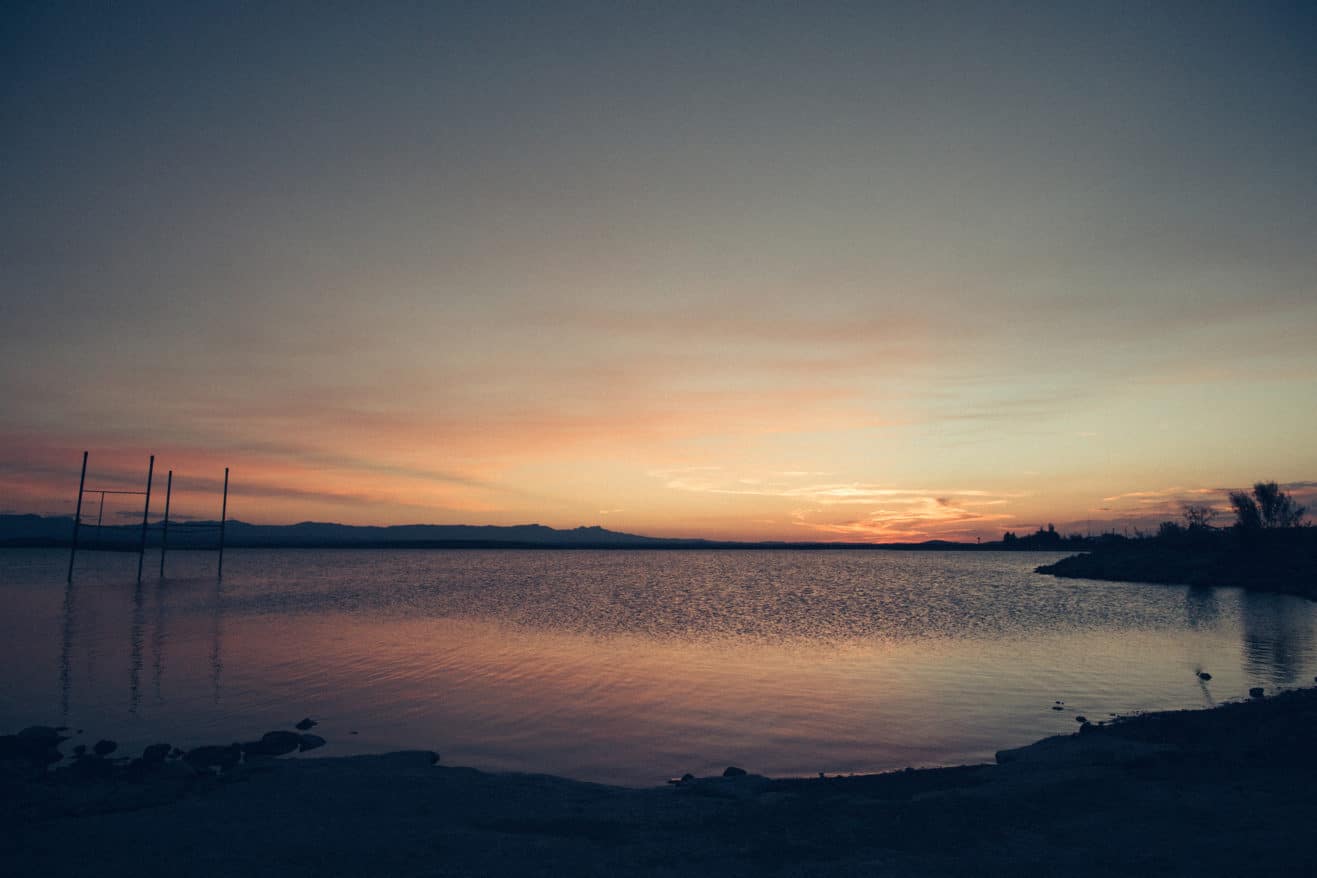
On the subject of desire: some etymologists see a link between desidero and de– and sidus, from the stars. The desert at night is a good place to observe the stars, which is why the University of Texas built an observatory about forty minutes northwest of my casita. The observatory’s gem is the Hobby-Eberly Telescope, one of the world’s largest, with an aperture of thirty feet, designed specifically to decode light from stars and galaxies billions of lightyears ago. Scientists who work on it study dark energy, the phenomenon of the accelerating universe—which is to say, why we are here and where we are going. They stare ten billion years back in space.
The telescope’s mirror is always tilted at the same angle, fifty-five degrees above the horizon. Flaring from Apache Corporation’s new wells a few miles away extends directly into its target field, interfering with the darkness and the telescope’s existential inquiry. Scientists have observed a 50 percent increase in light pollution since the drilling began. Our astronomical yearning and our desire for wealth collide in the desert.
Diary, October 15:
Today I met a young woman technician who repairs and replaces the composite mirrors on the Hobby-Eberly Telescope. She must bodily crawl into the iron lattice that supports the mirrors to replace the ones that became smeared with bird feathers, bug splats, bat guano overnight, when the telescope roof was open.
If she doesn’t clean the mirrors scientists may not know dark matter from bat shit.
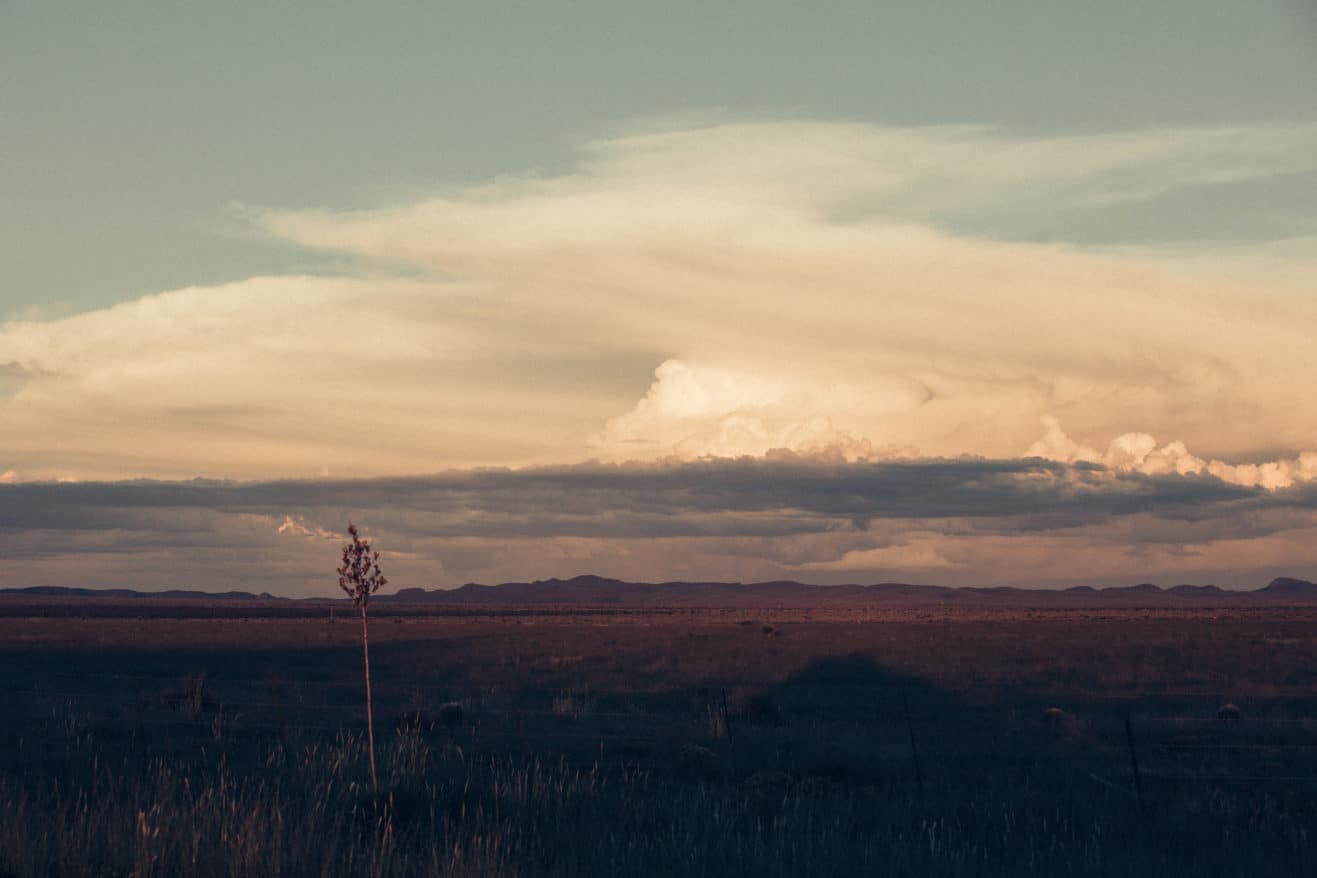
Braided clouds, clouds like down comforters, clouds like oatmeal porridge. A funnel cloud balances on the southern peak of Twin Sisters, near the edge of the Paisano Caldera. Above the northern peak another cloud bends skyward in a convex hollow. As if one peak inhales the cloud and the other blows it out and upward. I watch the cloud mimic the suck and blow of long-dormant volcano and think: desert slapstick. “The desert,” Keller says, “doesn’t give a shit about us.”
When I call the desert a trickster—a crazy-maker, a tease—I am engaging in a form of avoidance. I shed responsibility the way diamondbacks shed their skin in the carport, near the fox’s nest. This anthropomorphic desert is not external. It exists within me, within each of us, laying bare our exotic fantasies and our aspirations, our prejudices and our fears.
Energy Transfer Partners, the company that is defacing the desert around the ranch, is also building the Dakota Access Pipeline. The construction of that pipeline has destroyed sacred sites of the Sioux nation and may contaminate the nation’s water supply. Such moral paucity about it. Such a desert of the heart.
“Liquid to solid to gas. Our stories are many places / in many forms. All this land is Indian land,” writes Trevino L. Brings Plenty.
Diary, November 23:
Enrique says: “The land belongs to no one. The United States won’t be here in three thousand years. They are going to run out of future, run out of land.”
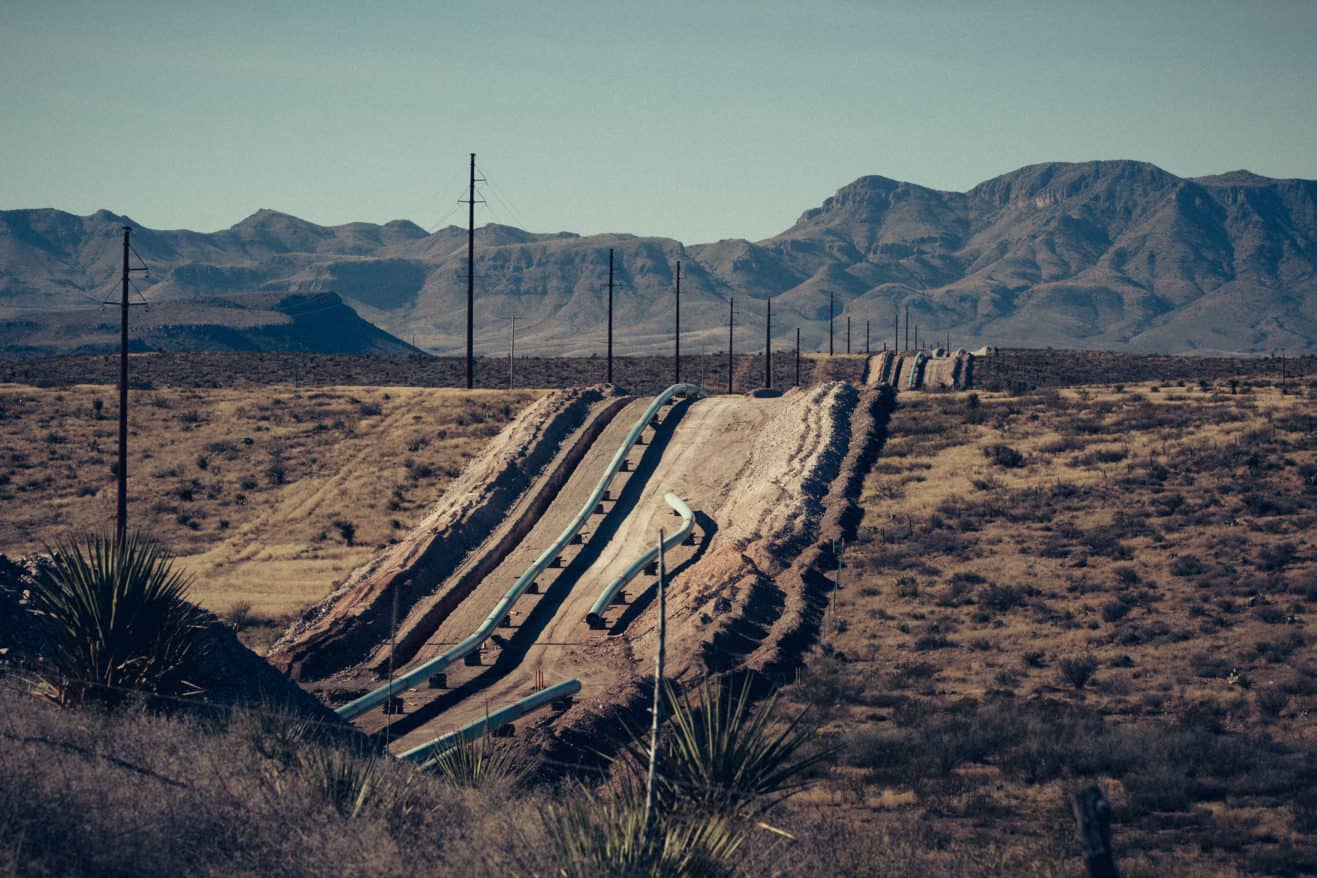
The desert is growing.
All over the world, it is gobbling up pasturage and farmland. Each year, globally, nearly thirty million acres—an area larger than Pennsylvania—degrade to desert: we are running out of fertile land. Over a decade of working in northern Afghanistan I saw the desert swallow asphalt roads, villages, plug wells with fine sand. Some dunes advanced three feet a day. “The desert,” says Keller, “eats us alive. Beautifully displays our bones. And always defies expectations, whatever those may be.” Desertification affects nearly a third of the United States.
Senegal, where I lived before coming to the Chihuahuan Desert, is withering, too, despite the Atlantic lapping its western flank. This is why so many men in West Africa walk seaward—some, away from their desiccated farms and grazing lands, to try their luck at sea, where they cast monofilament nets and often haul nothing because in our greed the Global North is decimating the waters; others, to cross the sea, to try their luck in Europe. All the migrants who come to Europe today are fleeing from drylands, where the fight for dwindling resources degenerates into depravity, militancy, abuse.
The sea, too, is a kind of a desert. Bones of the people who did not make it across, too, pave its floor.
Once upon a time there were no deserts. The Neolithic Sahara was lush, sodden with the subpluvial era that had followed the last glaciation. Herds of hippopotamus and giraffe and ostrich and zebra grazed along mighty rivers that were full of fish. You can still see their dry courses from space. You must step that far away to access a continent’s memory.
The Scottish artist Katie Paterson once had nanotechnology experts chisel a grain of sand from the Sahara to 0.00005mm. Then she had this nano-grain deposited back in the desert. She titled this project: “Inside this desert lies the tiniest grain of sand.” This is sort of like looking at prehistoric riverbeds in the desert from a satellite. One thing the desert does do is remind us of our insignificance.
A few years back I herded cattle with a family of nomadic Fulani cowboys in the Sahel, a belt of arid scrubland that stretches from the Atlantic to Lake Chad just south of the Sahara. Climate change is stripping their migration routes of vegetation before their eyes. In the drying bush their slatribbed cows let down hardly any milk. At times my friends’ progress seemed mournful, almost funerary. At times it was funerary, and then my hosts dug fresh graves near their campsites. I learned: heartache is also a kind of a desert.
Back when the Sahara was a verdant Eden, Fulani forefathers drove their cattle across it from the Horn of Africa. Maybe that is why my friends don’t give up now, continue to graze as more and more of the savannah turns to dust. They are waiting for the next subpluvial.
Every desert has a beginning. Some may be born as you read this.
